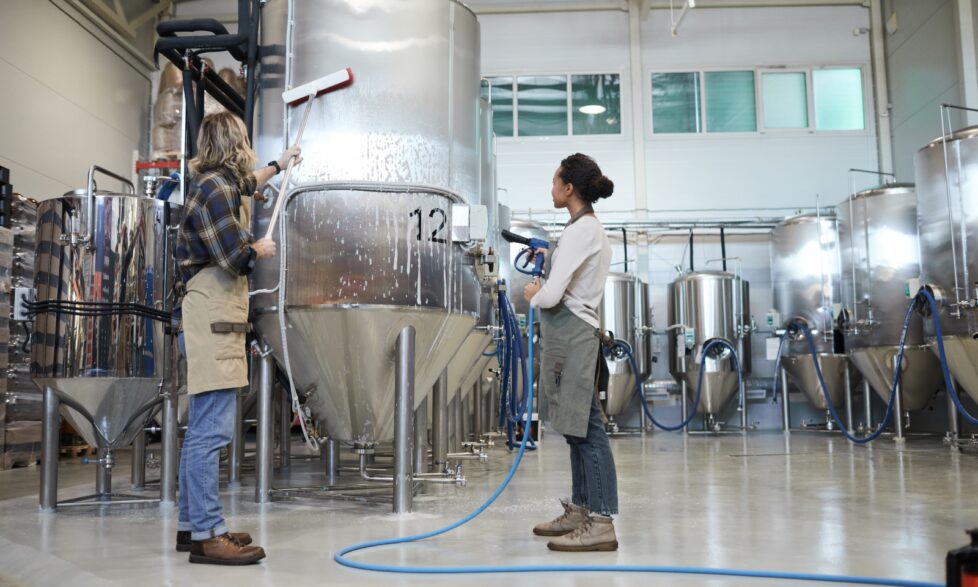Smaller businesses and the transition to net zero
SMEs often have lower carbon footprints than larger businesses but collectively account for around half (43-53%) of UK businesses’ greenhouse gas emissions, so supporting them to get to net zero is critical if the UK is to meet its climate change targets.
Most SMEs are at the earliest stage of their transition to net zero – three-quarters are yet to implement a comprehensive decarbonisation strategy, and while nearly 60% of firms report reasonable awareness of key net zero concepts, around half (53%) are not yet ready to prioritise decarbonisation.
As with larger businesses, there are meaningful actions that all SMEs can take to put them on the path to net zero:

- Measurement is key.
The starting point for any business or organisation is to calculate your carbon footprint. This should include so-called ‘scope 1’ and ‘scope 2’ emissions, from direct fuel consumption and electricity use, and also, crucially, indirect ‘scope 3’ emissions from the extraction of raw materials, manufacturing, and customers’ use of products. Free tools and resources are available, for example, those provided by SME Climate Hub, Carbon Trust and Normative, to help smaller businesses produce a simple baseline estimate and identify carbon ‘hotspots’ – areas for priority action. Free tools can have limitations though - we set out the pros and cons of free/cheap carbon accounting software here.
For an in-depth perspective, Mike Berners Lee’s The Carbon Footprint of Everything is a great source of insight, written by one of the world’s leading authorities. We also offer an in-depth carbon accounting toolkit designed specifically for SMEs, which is powered by the industry-leading Compare Your Footprint platform. - Understand your destination.
‘Net-zero’ is defined in myriad ways. Many corporate pledges put more emphasis on the 'net' than the 'zero' or rely on the emergence of unproven technology. To cut through the greenwash, the Science Based Targets initiative (SBTi), which validates businesses’ net zero plans, has set the world’s first science-based definition of net zero in line with limiting global heating to 1.5 degrees. This recommends businesses halve their emissions by 2030 and reduce them by 90% by 2050 at the latest, all without the use of carbon offsetting. Helpfully, SBTi also provides resources for SMEs.
- Make a plan. All businesses are different, but most can take these steps to reduce their carbon footprint:
- Engage your landlord. Talk to them about energy efficiency and switching to renewable energy. Can they provide energy consumption data? What are their plans to tackle greenhouse gas emissions in their property portfolio? Tenant-landlord partnerships are imperative to reaching net zero, and workspace providers are increasingly bolstering their green credentials. It’s a renters’ market, so shop around.
- Switch to clean energy. If you own your own workplace, switch to a verified renewable electricity provider. Think about how you can reduce the need for heating and cooling at work.
- Travel light. Review your travel plans and reduce the impact of employee commuting and business travel – particularly flying. Think about incentivising low-carbon travel through cycle-to-work schemes or season ticket loans, and the investment required to switch to electric vehicles.
- Engage your staff. No one can deliver net zero alone, and staff buy-in is critical to delivering net zero by embedding your action plan into every decision you make.
- Join the club. Join a sector organisation relevant to your business that is active on sustainability and net zero. Collaboration is key, and you will be able to learn from larger businesses with greater in-house resources or join with other SMEs and make a collective move to tackle a core issue.
- Clean up your investments. Business investments and company pensions can be diverted away from fossil fuels and other polluting industries. Make My Money Matter calculates a green pension is 21-times more effective at cutting carbon than stopping flying, becoming a vegetarian, and moving to a renewable energy provider combined.

It's also important to focus on supply chains and procurement, though how important these are will depend on your business type:
- Engage your supply chain. This is a priority for SMEs in more carbon-intensive industries such as manufacturing, transport, or retail – an estimated 28% of SMEs – whose scope 3 emissions will be much larger than services-based businesses. Smaller businesses are likely to have deeper relationships with suppliers, so start the conversation, find out whether your suppliers are already looking at this, and go on the journey together.
- Buy less, and buy better. Services-led SMEs particularly should focus on procurement. Work out ways to buy less, for example by leasing or buying refurbished equipment, or buy better, focussing particularly on more carbon-intensive products such as IT equipment, and office fit-out and furniture.
To learn more about how we could help your organisation on its sustainability journey, contact us below.
You can view our full range of sustainability consultancy services here, including our carbon accounting toolkit for SMEs and our full carbon accounting consultancy solution.
Image credits: field: Lili Popper, arrows: Possessed Photography, shipping containers: Eilis Garvey d, all via Unsplash







